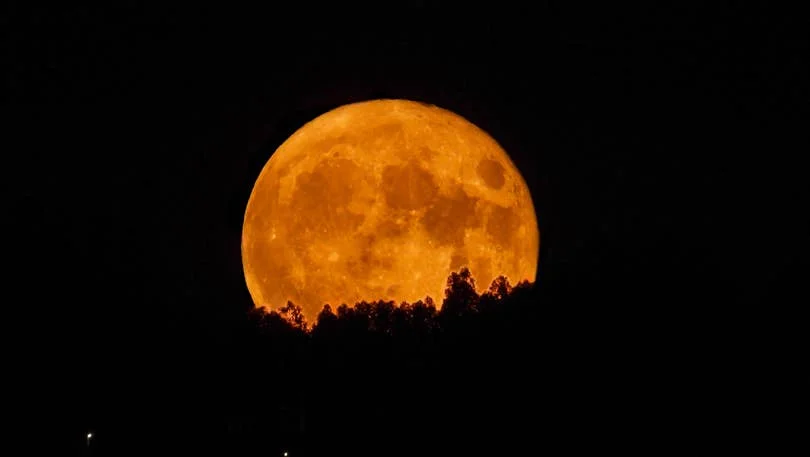On the night of September 17, 2024, skywatchers across the globe were in for a rare treat—a spectacular supermoon eclipse. This extraordinary event combined two fascinating lunar phenomena: a supermoon and a partial lunar eclipse. The combination made for a breathtaking display and an exciting opportunity for stargazers to appreciate the beauty and complexity of the cosmos.
Table of Contents

Also Read: Scientists may have Unraveling the Mystery of Egyptian Pyramids’ construction
What is a Supermoon?
A supermoon occurs when the moon, during its full phase, is at its closest point to Earth, a position called perigee. At this time, the moon appears significantly larger and brighter than usual, with an increase in size of about 14% and up to 30% more luminosity than a typical full moon. This phenomenon captivates people around the world as the moon, already a familiar sight, transforms into an even more majestic and striking object in the night sky.
The term “supermoon” was popularized by astrologer Richard Nolle in 1979, and it has since been widely adopted to describe these moments when the moon’s proximity to Earth enhances its visual impact.
What is a Lunar Eclipse?
A lunar eclipse, on the other hand, occurs when the Earth moves between the sun and the moon, casting a shadow on the lunar surface. There are three main types of lunar eclipses: total, partial, and penumbral. In the case of a partial lunar eclipse, only a portion of the moon enters the Earth’s darkest shadow, known as the umbra, leaving part of the moon darkened. This contrast between the illuminated and shadowed parts of the moon creates a mesmerizing visual effect, enhancing the drama of the night sky.
The 2024 Supermoon Eclipse: A Unique Event
The supermoon eclipse of September 2024 was particularly notable because it combined the brilliance of a supermoon with the intriguing partial lunar eclipse. The full moon, known as the “Harvest Moon,” reached its closest point to Earth, making it a supermoon, while the Earth’s shadow partially covered the moon at the same time.
This exceptional event was visible from many regions, including the UK, Europe, North America, and parts of Asia and Africa. Observers in these areas could witness the eclipse at around 1:40 AM BST, with the event reaching its peak an hour later at 2:40 AM BST. At its maximum, around 4% of the moon’s surface was obscured by Earth’s shadow.
Why Was This Event So Special?
While supermoons and lunar eclipses happen relatively often on their own, the pairing of these two phenomena is a rare occurrence. The last time something similar happened was in 2015, and the next supermoon eclipse won’t happen again until 2033. This rarity, coupled with the stunning visual display, made the 2024 event a must-see for both dedicated astronomers and casual enthusiasts.
Observing the Supermoon Eclipse
One of the most appealing aspects of a supermoon eclipse is that it can be enjoyed without any specialized equipment. Unlike solar eclipses, which require protective eyewear to avoid damage to the eyes, lunar eclipses are completely safe to view with the naked eye. However, using binoculars or a telescope can significantly enhance the experience, allowing viewers to observe fine details of the moon’s surface and the shadow cast by the Earth.
For those who missed the event or were in areas where weather conditions obscured the view, numerous photographs and videos are available online. These visuals showcase the moon’s enlarged and bright appearance, along with the eerie encroachment of Earth’s shadow.
The Science Behind the Supermoon Eclipse
Beyond its beauty, the supermoon eclipse also serves as a valuable opportunity for scientific observation. By studying the way Earth’s shadow interacts with the moon, scientists gain insights into the moon’s surface and composition. Additionally, the gravitational effects of the moon on Earth are more pronounced during a supermoon, offering researchers data on tides, orbital dynamics, and the moon’s long-term influence on our planet.
The combination of these phenomena also allows astronomers to deepen their understanding of the moon’s orbit and its interactions with the Earth and the sun.




